Project Samurai
I’ve recently begun working on a personal game project. It’ll be a game from my personal favorite genre, Metroidvanias. If you don’t know what Metroidvanias are, they are games that focus on exploration and slowly expanding the world map based on collectibles and upgrades that you earn throughout the game.
I don’t want to reveal too much about the game yet, as many of the ideas for the game are still being hammered out. As such, there isn’t a playable demo yet, but I have several images of the models I’ve made so far for the game.
Android Games in Unity3D
These games were made back when I was first learning how to use the Unity3D engine. They are relatively simple games that were made to learn how to integrate the touch screen and motions controls of Android devices.
Matching Game: A basic card matching game where the user taps a card to flip it over and try to find its pair among the other cards. Interactions with the cards were done using ray-casts from where the user taps the screen.
Maze Ball: The player controls a ball and navigates through the maze using the motion controls provided in current Android devices. By tilting the screen further, the player can move faster, and by tilting back, they can come to a stop.
Space Station Defense
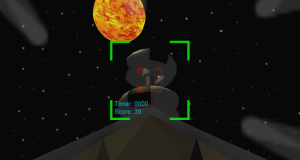 Space Station Defense is a game that was developed for the Oculus Rift. In the game, the player will fly around in the defense zone of a space station and fight back against the invading forces.
Space Station Defense is a game that was developed for the Oculus Rift. In the game, the player will fly around in the defense zone of a space station and fight back against the invading forces.
In the game, the player uses a joystick to control the trajectory of their ship, and uses the Oculus Rift’s motion sensors to aim where their fire their guns.
Want to give the game a try? Download here.
Capstone Project Worker Models
For my Capstone project, I decided to make the models for my workers. As they are the center of the project, I felt as though they had to be modeled by myself. There are three types of workers for my game: the scientist, the treasure hunters, and the physical workers. All three are necessary in order to beat the game. The dolphin was the first model that I created. As for why dolphins are my scientists, I’m not sure myself, but it seemed humorous and a bit fitting, so I figured, “Why not?”
The treasure hunter came next. The design is inspired by a scorpion, with articulated joints and a stinger at the end of a long tail. His design is all about corners, contrasting the smooth, round edges of the dolphin. As he is the treasure hunter in a group-based game, I also wanted to make the model seem untrustworthy, to show just how the workers are capable of putting aside their differences for a common goal.
The robots came last. Originally, they were going to be small, hooded aliens, but as I continued modeling the head and torso, the design became more mechanical. The robots are the physical task force of the group, and they will be the main tacklers of obstacles that appear on the world map.
Capstone Project
At Neumont University, we are required to do a Capstone Project that challenges us as developers and to show how far we have come in our two years at the school. This quarter, I will be doing mine, and I will post updates about challenges I met, and what I did to solve them.
With that said, let’s have a quick overlook of what my project is.
The most important part about my project is that it will be a game, so it being a fun experience to play is, of course, crucial. The game will showcase the bulk of my project: Group AI. While not a shooter or other action game, there are many areas in games that would benefit from having a strong group AI. My game will be a strategy game, with some god game-like elements.
The player will be in charge of a group of workers attempting to build a spacecraft to leave their planet. However, there are many resources needed to make a space ship, with money, of course, being the biggest one. The player will lead the workers into finding treasures on an unexplored, randomly-generated map. Of course, if it was as simple as walking into a meadow and finding a lost diamond mine, it wouldn’t be much of a game. For this reason, various types of obstacles will be placed on the map, requiring the workers to come up with different solutions in order to reach their goals.
I’ll make an update at the end of each week to show what progress I have made so far.
Asteroid Field Generator
Above, you can see an asteroid belt around a space station. The cool thing about this, though, is that the asteroids are all placed randomly, and are created at runtime, rather than being placed in the scene and randomizing the position.
The script has a lower bounds and an upper bounds for the area it can reach. If one was so inclined, you could you have a thin asteroid belt placed far away from your center object, or a thick asteroid belt placed close to your center object.
You can also make some pretty cool effects, such as:

Mind, this is not the best use of resources for a star, but it’s a neat little thing that I couldn’t resist sharing.
This asteroid field generator will be used for small dogfighter game that I am creating with a group for the Oculus Rift. As our setting is in space, asteroids are a valuable asset, and this tool makes it easy to generate a field in a short amount of time.
Duality of Man
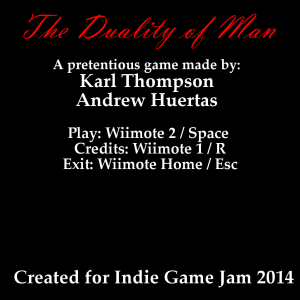 The Duality of Man was a game created in 48 hours for the Utah Indie Game Jam of 2014.
The Duality of Man was a game created in 48 hours for the Utah Indie Game Jam of 2014.
It is a two-player 3D platformer where the players are separated and attempt to reach elevators at the end of each level to proceed with the game. As the players progress through the game, various puzzles will require coordination between the two players in order to reach the end of the level.
The current build is four levels long, and more levels are currently in development.
The Duality of Man was created under the theme of “Contrast.” In the game, the contrast appears in the worlds of the two players. The first player’s world is monochrome, with blocky shapes, while the second player’s world is largely colorful and rounded.
If you would like to play the current build of The Duality of Man, it can be downloaded here.
Updates Imminent
As you can see, this blog has been dead for a while. However, that will be changing soon. Updates will be coming in the immediate future.
Smooth Movement and Recursive Asteroids
Colors, turrets, and asteroids have been added to the game engine since the last video.
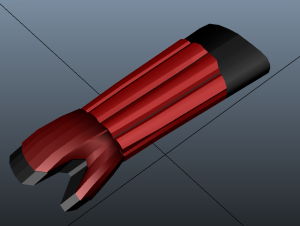

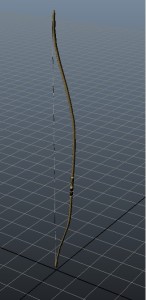
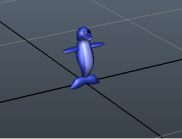
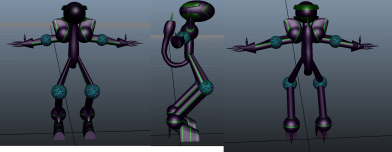


Recent Comments